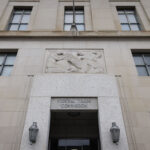Although earthquakes are among the least predictable natural hazards, losses to unprepared businesses can be substantial when they do occur. Affiliated FM, a commercial property insurer and loss prevention expert serving medium-sized companies, released actionable steps businesses can take to significantly prevent or reduce damage to their facilities from earthquakes.
“In the event of an earthquake, preparation measures can mean the difference between a business experiencing a distraction or major destruction,” said Mike Lebovitz, vice president and manager of Affiliated FM. “For business owners with operations in historically active earthquake zones, it is critical for them to understand and identify the risks that earthquakes present as well as effectively address them.”
Four sizable earthquakes have occurred in or off the coast of California since June 2005 and serve as a reminder of the seismic risk to businesses. According to the most recent “Progress Report for the California Earthquake Loss Reduction Plan 2002-2006” issued by the California Seismic Safety Commission in December 2003, individual business owners and corporate decision makers do not fully understand the potential economic losses resulting from earthquakes.
“Structural damage to buildings may be top of mind, but business owners should also consider shake damage to nonstructural systems, equipment and stock,” said Lebovitz. “People may not realize that fires caused by damaged gas lines and the inability of broken sprinkler systems control those fires, pose the greatest threat immediately following an earthquake.”
Fortunately, property damage caused by earthquakes and ensuing fires can be prevented or minimized by following a comprehensive emergency plan before and after an earthquake. To reduce the potential of business interruption, business owners should consider taking the following measures:
General Preparation:
Establish a comprehensive emergency action plan to control hazards;
Determine if secondary hazards from an earthquake exist as a result of a facility’s location, such as a landslide, flooding or tsunami;
Establish and train an Emergency Response Team (ERT) covering all shifts to implement the emergency action plan, and stockpile emergency supplies that may be needed to support the ERT;
To prevent sliding of production equipment and utilities, such as boilers, generators and transformers, anchor items to the floor or to an adjacent wall; for shelved items, install restraining devices at the edges to prevent items from falling;
To prevent swinging of suspended ceilings, piping and ducts, brace items to the structure from which they are suspended;
Stock up on fire extinguishers and maintain an onsite hose with heavy water pressure.
To Prevent Fire:
Install seismic gas shutoff valves on the main service lines to each building and install automatic shutoff valves for flammable liquid and gas distribution systems;
To safeguard fire protection systems, brace sprinkler piping at regular lengths and at changes of direction, install flexibility for piping that spans joints or buildings, provide sufficient clearance of sprinkler heads and anchor water supply equipment;
To prevent overturning of materials and equipment that might result in fire, anchor items to the floor, adjacent walls or to each other in groups.
After an Earthquake Strikes:
Survey facilities for combustibles in contact with ignition sources with awareness that fire danger is greatest shortly after an earthquake;
Take inventory of damage in and around the facility and begin salvaging items as soon as possible to prevent further damage;
If sprinkler piping is damaged, empower ERT members to maintain as much fire protection in service as possible, bypass problem areas and provide alternate water supplies where possible;
Make certain that all sprinkler water supply valves are open and the water supply is freely flowing;
Check gas, water and electrical services for damage and shut off as necessary;
Repair any damaged fire protection systems immediately to prepare for aftershocks.
“With an approach to earthquake loss prevention as a long-term investment rather than a short-term expense, business owners will not only enjoy greater peace of mind, but can better ensure they will be in business for their clients and employees should Mother Nature unleash its fury,” said Lebovitz.
Was this article valuable?
Here are more articles you may enjoy.


 Adjusters Launch ‘CarFax for Insurance Claims’ to Vet Carriers’ Damage Estimates
Adjusters Launch ‘CarFax for Insurance Claims’ to Vet Carriers’ Damage Estimates  Zurich Makes £7.7 Billion Bid for Specialty Insurer Beazley
Zurich Makes £7.7 Billion Bid for Specialty Insurer Beazley  Alliant Latest to Sue Howden US Over Alleged ‘Smash-and-Grab’ Poaching
Alliant Latest to Sue Howden US Over Alleged ‘Smash-and-Grab’ Poaching  Trump Nominates WeatherTech’s MacNeil to Be FTC Commissioner
Trump Nominates WeatherTech’s MacNeil to Be FTC Commissioner 

